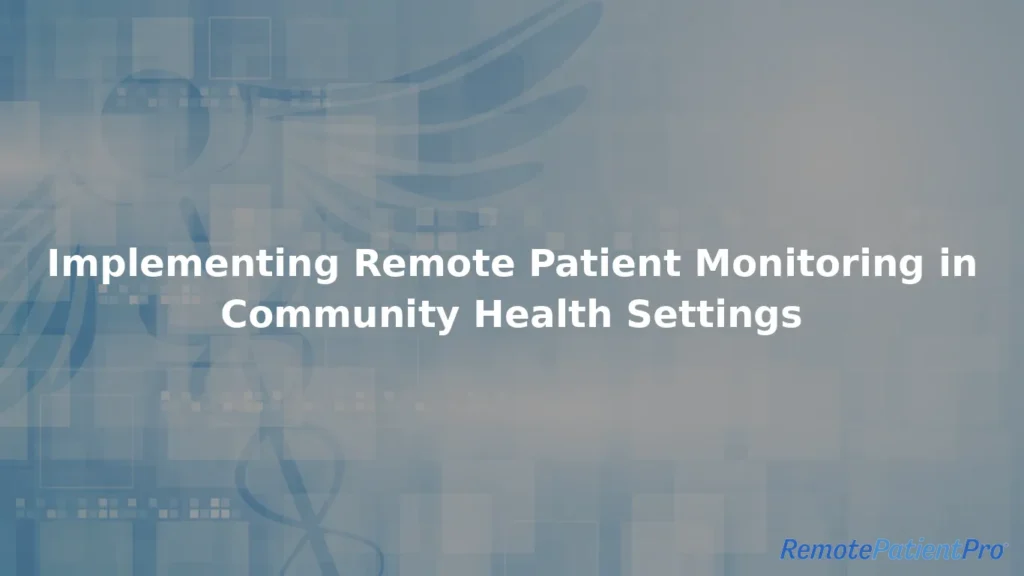Implementing Remote Patient Monitoring in Community Health Settings
Community health centers and Federally Qualified Health Centers (FQHCs) both serve diverse patient populations, many of whom face barriers to consistent healthcare access. Implementing remote patient monitoring (RPM) in community health settings provides an effective solution for managing chronic diseases, reducing hospital readmissions, and improving patient engagement.
RPM allows healthcare providers to track patient vitals in real time, detect early warning signs of worsening symptoms, and intervene before health deteriorates — all while minimizing the administrative burdens often placed on clinical staff. However, in order to be successful, RPM must be able to integrate with your existing workflows and encourage your patients and clinical teams to engage with its platform.
Key Benefits of RPM in Community Health Settings
- Improved Chronic Disease Management – Enables continuous monitoring of conditions like hypertension, diabetes, and COPD.
- Reduced Hospital Readmissions – Allows early interventions by tracking vital signs remotely.
- Enhanced Access to Care – Supports underserved patients who face transportation and financial barriers.
- Increased Efficiency for Healthcare Providers – Automates routine monitoring, freeing up time for in-person care.
- Better Patient Engagement – Empowers individuals to manage their health through user-friendly digital tools.
Steps to Implement RPM Successfully
Assess Organizational Readiness
Before launching an RPM program, healthcare providers should evaluate their IT infrastructure, EHR compatibility, and staff capacity. Conducting a needs assessment helps identify patient populations who would benefit most from remote monitoring.
Choose the Right RPM Solution
Selecting an RPM platform that integrates seamlessly with existing healthcare systems will ensure a smooth transition to using the service while still being able to track key patient information. RPP’s remote patient monitoring (RPM) platform is designed for community health settings, offering:
- Real-time health tracking for chronic disease management.
- Automated alerts and notifications for at-risk patients.
- Integration with EHRs and telehealth systems.
- User-friendly technology that clinicians and patients can understand.
Train Clinical Staff and Patients
For RPM to be effective, staff must be trained on how RPM sensors work, how to access and review the data they collect, and how to coach patients about the proper use of those devices. The Agency for Healthcare Research and Quality (AHRQ) notes how one of the key ways to prevent adverse health events and readmissions is by helping patients understand their diagnoses and treatment plans. Educating patients on how to use RPM will prompt them to be more involved in their care and lead to better health outcomes.
Monitor and Optimize Program Performance
Tracking patient use, clinical outcomes, and readmission rates will help health centers refine their RPM strategies for greater results. Regularly obtaining feedback from patients and care teams is essential to this improvement.
The Future of RPM in Community Health Centers
By using RPM correctly, health centers can expand access to care, improveg chronic disease management, and reduce healthcare costs.
Want to learn more about implementing RPM at your community health center? Schedule a demo today to see how we can help!

